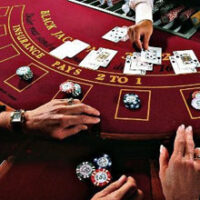The Evolution of Boxing From Ancient Origins to Modern day

Boxing, known as the “Sweet Science,” is a sport that has captivated audiences for centuries. Its roots can be traced back to ancient civilizations, where it was more than just a method of sport; it was a social and cultural phenomenon. Today, Boxing has evolved into a global spectacle, garnering millions of fans and numerous champions worldwide. This article delves into the rich history and impact of boxing, examining how it has transformed over time.
The Ancient Beginnings
Boxing’s origins can be traced back to ancient times, with evidence of fistfighting found in artifacts from civilizations like the Sumerians, Egyptians, and Greeks. The earliest known depiction of boxing in history was found in a Sumerian relief dating back to 3000 BC. Boxing in these ancient cultures was often linked with rituals and was a means to demonstrate strength and valor.
In ancient Greece, boxing became an integral part of the Olympic Games, starting in 688 BC. It was known as “pugilism,” and fighters, known as “pugilists,” would compete in a more structured environment. The rules were minimal: the objective was to knock the opponent out while avoiding blows. This early form of boxing laid the groundwork for the regulations and styles that would develop in later years.
The Roman Era and Beyond
As the Roman Empire expanded, boxing was incorporated into combat sports known as “munera,” where slaves and gladiators fought for public amusement. Roman boxing was brutal, as fighters often utilized leather straps to protect their hands, but the environment was far more dangerous than modern boxing. The sport continued to evolve, but as the Empire fell, so too did the popularity of boxing.
In the Middle Ages, boxing was often viewed as barbaric and fell out of favor. However, it never disappeared entirely; informal matches occurred throughout Europe. By the 17th century, boxing began to reemerge, particularly in England, where it became a popular pastime among the nobility.
The Birth of Modern Boxing
The modern incarnation of boxing began to take shape in the 18th century with the establishment of formal rules. The introduction of the “London Prize Ring Rules” in 1838 marked a significant turning point. These rules established a standardized set of guidelines for matches, including the introduction of rounds and a defined area for competition. This soon laid the groundwork for the Marquess of Queensberry rules in 1867, which further refined the sport by introducing gloves and emphasizing fair play.
The Golden Age of Boxing
The late 19th and early 20th centuries are often regarded as the “Golden Age of Boxing.” This era saw the emergence of iconic champions such as Jack Johnson, who became the first African American heavyweight champion in 1908, challenging racial barriers and social norms in a segregated America. The sport gained enormous popularity, draws television audiences, and became a significant cultural force.
During this time, boxing heroes like Joe Louis and Sugar Ray Robinson captured the imagination of the public, elevating the sport to new heights. The art of boxing employed not just physical strength but also strategy, with fighters honing their skills into an intricate dance of power and speed. The sport served as a reflection of society, showcasing social struggles, triumphs, and the pursuit of the American Dream.
The Rise of Television and Pay-Per-View

As technology progressed, so did the popularity of boxing. The 1950s era introduced televised boxing, allowing fans to watch their favorite fighters in real time from the comfort of their living rooms. This innovation helped propel the careers of legendary figures like Muhammad Ali, who became not only a champion in the ring but also a cultural icon, known for his charisma and social activism.
The advent of pay-per-view (PPV) in the 1980s revolutionized the sport once again. High-profile matches became massive events, allowing audiences to pay to watch iconic bouts between athletes like Mike Tyson and Lennox Lewis. These matches not only brought in substantial revenue but also integrated boxing into mainstream popular culture, attracting celebrities, sports enthusiasts, and casual viewers alike.
Boxing in the Modern Era
Today, boxing remains one of the most followed sports worldwide, with a dedicated fanbase that spans all demographics. Major boxing events and championship matches continue to attract millions, with fighters like Canelo Alvarez and Tyson Fury drawing global attention and significant financial earnings.
Moreover, the rise of mixed martial arts (MMA) introduced competition to boxing’s dominance, sparking debates about combat sports’ future. However, boxing’s unique skillset, traditions, and cultural significance have allowed it to retain its place in the sporting world.
The Cultural Significance of Boxing
Boxing’s impact extends beyond the ring; it serves as a reflection of social and cultural dynamics. The sport has been a platform for tackling issues such as racism, social injustice, and economic disparity. Fighters like Muhammad Ali, Joe Louis, and more recently, Floyd Mayweather Jr., have used their platforms to speak out on societal issues, influence change, and inspire generations.
Moreover, boxing has found its way into popular media, portrayed in films, songs, and literature. Movies like “Rocky” and “Raging Bull” examine the psychology and struggle of boxers, showcasing their drive, determination, and the sacrifices made for glory. Boxing has therefore become interwoven with the fabric of society, resonating with people on various levels.
The Future of Boxing
As we look ahead, the future of boxing appears promising yet challenging. The emergence of technology in training and analytics has transformed how fighters prepare for bouts, leading to enhanced performance and strategy. Moreover, global expansion has opened new markets, allowing for a broader audience and increased participation in the sport.
However, boxing must contend with issues such as fighter safety, regulation, and the potential for the sport to be overshadowed by alternatives like MMA. Balancing tradition with modernization will be crucial as boxing strives to maintain its identity while adapting to contemporary preferences.
Conclusion
Boxing, with its rich history and cultural significance, remains a dynamic and evolving sport. It has transitioned from ancient practices to a global phenomenon, capturing hearts and minds across generations. As we continue to celebrate the legends of today, we must also acknowledge the sport’s collective past and the journey it has taken to remain relevant. Boxing, indeed, is not just a sport; it is a story of resilience, passion, and the relentless pursuit of greatness.






